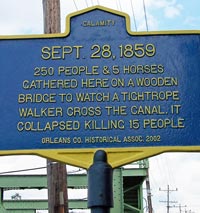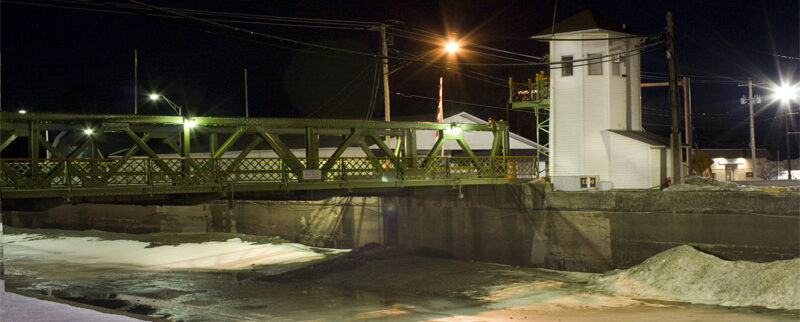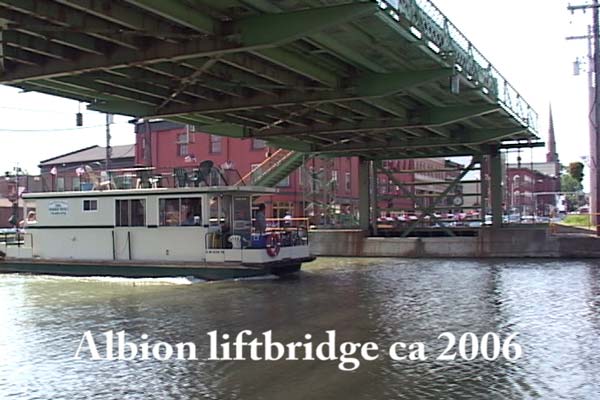This Swing Bridge at Albion, NY is just one of many that had to be replaced for the 1905-1918 NYS Barge Canal enlargement. The masonry buildings you see on the other side are typical of those that crowded close to the canal at villages like this. The modern canal was to be wider, with much higher bridge requirements than before. The problem was, how to accomplish both with so many buildings like these that can’t be moved easily.
Fortunately, a new technology had become available just in time to solve the problem: Direct current electricity – combined with a clever counterweight system – made it practical to lift the bridges when canal traffic came through.
 This is another view of the steel swing bridge shown in the picture above. Note the white wooden rails alongside the maintenance building on this side of the bridge. The towpath is on the left (north) side of the canal here, and there were times when boats had to pass on the south side of the canal. Those rails allowed the towropes to slide over the building. The sides of the bridge trusswork had a similar design for the same reason. Swing bridges like this one weren’t the rule on the Erie. Cheaper “bowstring bridges” were much more common. Why was a swing bridge installed here at Albion? The answer might be found on the historical marker at the site shown here (Sept 28, 1859 – 250 people & 5 horses gethered here on a wooden bridge to watch a tightrope walker cross the canal. It collapsed killing 15 people). Swing bridges, while much more expensive to build and maintain, are inherently more stable.
This is another view of the steel swing bridge shown in the picture above. Note the white wooden rails alongside the maintenance building on this side of the bridge. The towpath is on the left (north) side of the canal here, and there were times when boats had to pass on the south side of the canal. Those rails allowed the towropes to slide over the building. The sides of the bridge trusswork had a similar design for the same reason. Swing bridges like this one weren’t the rule on the Erie. Cheaper “bowstring bridges” were much more common. Why was a swing bridge installed here at Albion? The answer might be found on the historical marker at the site shown here (Sept 28, 1859 – 250 people & 5 horses gethered here on a wooden bridge to watch a tightrope walker cross the canal. It collapsed killing 15 people). Swing bridges, while much more expensive to build and maintain, are inherently more stable.




